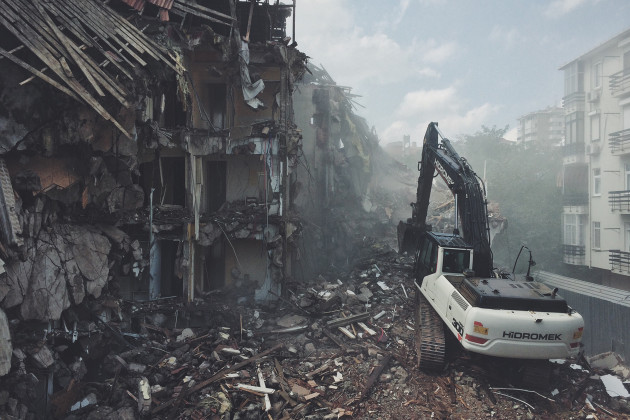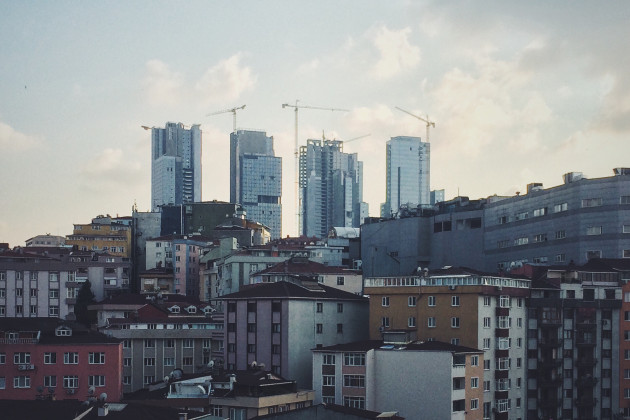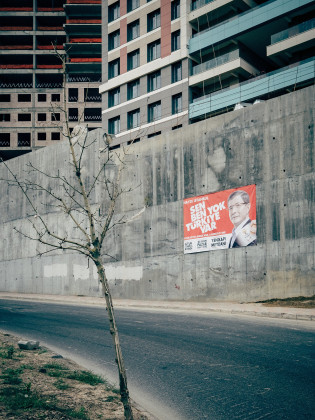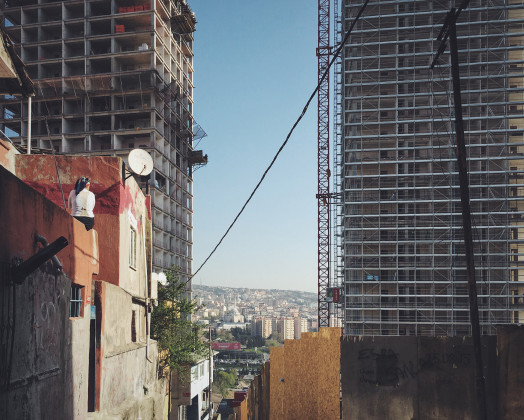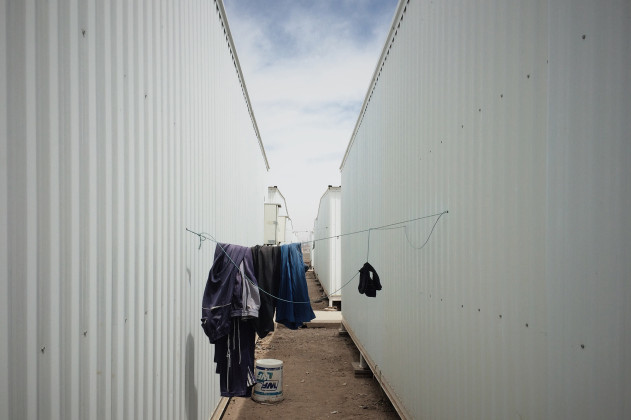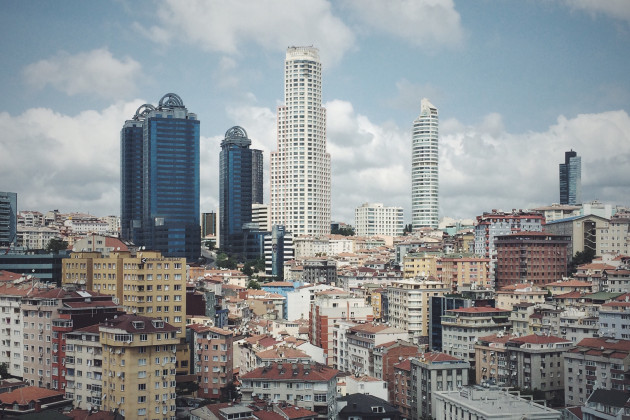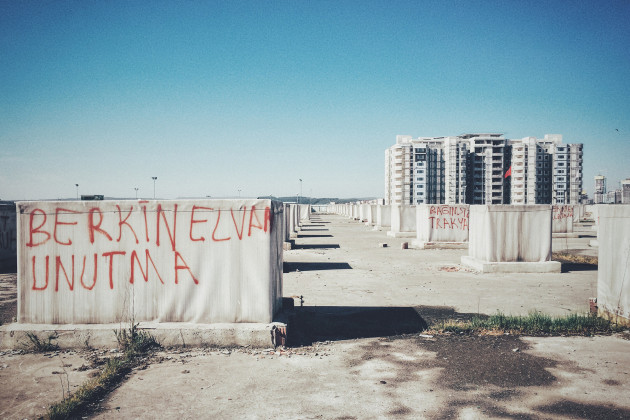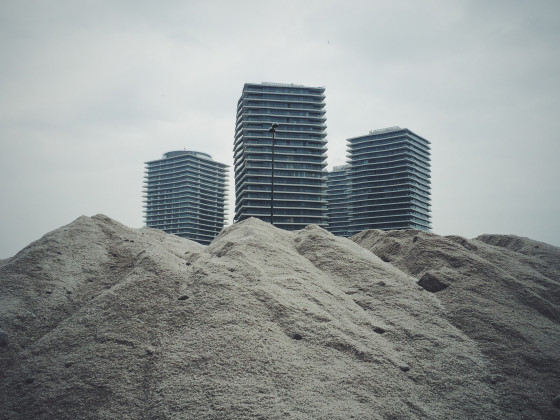In Between Fronts
When the concept of “front” was announced at the last Venice Architecture Biennale as a theme for architectural approaches to social issues, with implications of battles and firmness, and its militarist tone; it was predicted that intense arguments would occur in Turkey, a rich array of contents on the issue is provided. And arguments did occur. These discussions, however, mostly focused on the relation between the chosen project and the designing team’s various other urban projects. This was in fact a good opportunity to discuss the fronts through which architects deal with issues in Turkey, and to include not only the architects that produce for the biennale, but others as well.
As free market was turning individuals into slaves of the system with the promise of free will, the market-owned media was established through an illusion of the multiplicity of options, and the constant release of the same content into circulation. And tension was needed to be kept high in order to keep the interest alive. This tension in the architectural world has been based on the battles between fronts, as well as actors’ positions and discourses. As a result, the direct relationship between the object and the notion was broken, and in the place of analytical approach, rhetoric and sensation received praise.
With Adorno and Horkheimer determining that culture was a field of industry, Frederic Jameson had emphasized the instrumentation of media in that very field. Capitalism, running hand-to-hand with neo-liberalism after 1970s, found a way to benefit even from the critique against it, particularly in the area of culture.
The first architect who tried out this method was Rem Koolhaas, probably due to his experience in cinema and journalism. He realized that by producing within the system while criticizing it, he would not be letting anyone else criticize this very contradiction. And when he began to release research reports in satirical tones, adorned with graphics, his speculative statements began to be the topic of discussion, replacing his buildings. So much so that it was often hard to understand whether he was criticizing his own building or the environment that emerged through it.
After the 1980s, architectural criticism distanced itself from the buildings’ aesthetic, functional and technological characteristics; and instead fell into the areas of brutal urbanization, shallow politics, environmental problems and neoliberal economy. Concepts such as social architecture, green materials, sustainable architecture, and public spaces gained importance. The interest moved from the scale of single buildings to cities and countries. That’s why architects like Peter Zumthor began to be treated as reclusive monks. Designing a good building without referring on the issues of globalization, urban problems or environment was almost turning into a crime. Debating ethical problems turned into confession sessions. Remember that Fuksas, one of the star architects of today, has previously said “Less Aesthetics, More Ethics” during the 7th Venice Architecture Biennale he curated back in 2000.
Architecture by nature is a profession related to capital. After succumbing to global banality, the profession ran out of its exciting statements by 2000s with the collapse of modernist utopias, the increasing ordinariness of international style, and the short lifespan of post-modern architecture. The fronts to stand against or to align with were dissolved. The unmentioned motivations that should have already been a part of architecture, such as social awareness, environmental concerns and social sensitivities became parts of the agenda. These expressions, however, gave way to schizophrenic situations for those who were members of a profession that had been serving the capital and the political powers for hundreds of years. The game board previously limited by form, function, material and structure, slowly and with the help of the media, began to expand.
The rapid distribution and production of projects that had very little time to think twice, and media’s reliance of these, turned ideas volatile, and removed any chance of deepening concepts. Sensation, exaggeration and radical breakthroughs became the formula to be heard over all the noise of the surroundings, and the mechanism of the star architecture was born. Icons guided the media and the world of architecture for a long time. When we look at the changes in the themes of architecture biennales in Venice, however, we notice a transformation from subjective problems of architectural profession towards societal concerns, and that the concept of star architecture is slowly giving way to reactionary responses.
Even though the global architectural media is most likely to continue filling its pages with spectacular projects of star architects—at least for a little while more—the fundamentals Koolhaas has put forward at the former biennale, and those which Aravena also discusses this year, imply that we are about to enter a new era in architecture with regards to production styles. Yes, star architect’s time is about to end. Groups of two or three architects are replacing one-man offices. Considering the last two biennales, we find more than just worn-out concepts such as sustainability, public good or participatory architecture. In the very near future, I believe, building-oriented concepts such as tectonics, nature of the materials, structural creativity and computer aided constructions will be more in demand. Architectural productions that combine social and environmental concerns with these concepts, which also do not leave out aesthetics, will define the new era.
Star architects began to emerge in Turkey at the end of the 90s. The advancement of internet provided more opportunities to these actors for unleashing their discourses on the architectural scene. These were times of coherency between architects’ words and actions. Particularly in the early days of 2000s, being visible on various media outlets (themselves increasing in numbers as well) in a bid to guarantee new commissions became crucial. This was the architects’ response to the shortened design processes of the profit driven economy. Since the construction processes were slow, and took a while to be completed, some of the architects opted to being visible not only through their buildings, but also through their individual thoughts. During that time, some even tried Koolhaas’ formula, even though it failed. Later on, the confusion that followed the disconnection between discourse and actions became the fuel of social media. Instead of the objects that were in relation to the concepts; the positions of figures and their relations became significant; the history of architecture was now based on actors, and not on objects.
In 15-20 years, as the conditions changed in the country, Turkish architecture witnessed the shifting fronts of many actors who were acknowledged as role models and opinion leaders. Some academic figures in particular overtly played parts in various significant projects and ruined their own credibility by abandoning their positions as referees; and joining the game instead as defense players. The general silence among academicians on important matters and the fact that they left the burden of voicing critiques to practicing architects is another dimension of the issue.
In her most recent article, Hülya Ertaş explained, thoroughly and precisely, Aravena’s approach at the last biennale on how social problems can be solved through individual participation. If we put aside the fact that he made his reputation by building houses for the poor and running an office for the CEO of an oil company, Aravena might be considered as the Zumthor of the new era. He has managed to gain recognition by employing tactics of the media and of the academic world, and by generating projects that fill in the social voids without resisting the nature of the free market economy.
Had Aravena been here in Turkey, he would have found plenty of topics to delve in. He will not have, however, any clue about those issues following the biennale he curated. Refugees, TOKI blocks, hydroelectric power plants, airports and palaces built on forest lands, rapid rise in building permissions, worker fatalities at construction sites, profit-driven urban transformation under the disguise of earthquake precautions, cities bombed and torn down to the ground by the state, social security shaped by real estate, the decline in the quality of architecture schools in despite the increase in number, destruction of public spaces, rising traffic problem, the aesthetic reflections of the oppressive government etc. All these and many more had seemed like a rich menu for debates among architects during this biennale.
The Turkish Pavilion, however, referred to the trade relation between Turkey and Venice that was established hundreds of years ago, by preparing a visually fascinating installation that conceptualized border issues in a very indirect and, according to some people, misleading way. From a certain perspective, this installation may be reflecting the architects’ ambition to return to architectural cores such as form, texture, material, color and tectonic; and to distance themselves from social and environmental concerns. It is of course a choice to adopt a form of naivety under such chaotic circumstances, and to generate an object attractive to the media’s eye. And the curatorial team of course may be applauded or criticized for their choice. Nevertheless, most of the critique towards the curatorial team, who interpreted Arevana’s theme in such a way, is perhaps directed at the wrong places. The jury responsible for the selection did not disclose the reasons behind choosing that specific project, and the details of the work remained inaccessible until the opening of the biennale, and these gave way to speculations. We may even argue that this process was planned from the very beginning by someone familiar with media tactics which are fed by tension and speculation.
Moreover, shouldn’t the jury have eliminated this particular proposal that relied on an opportunity that the other teams didn’t have? The proposal was based on access to the oldest dockyards of the city, using the materials found on the site, where a contentious and secret transformation project is underway. This privileged selection will inevitably ruin not only the team’s business in their future commercial works, but also Turkey’s intellectual participation to an international academic event, due to the selection’s close relation to the market. It is not convincing to claim that the project on Haliç Dockyards and the biennale are separate fronts.
The theme of the biennale focused on the fronts fighting for public good despite the challenges of the market economy that architects face in the capitalist order. By the looks of it, it is unimaginable in near future that these concerns would be debated in Turkey. For a long while to come, we will continue to have an architectural scene occupying itself with playing with beads in the midst of a clutter of problems caused by ill-designed cities. We are not, however, playing on a board with only two sides anymore; one will have to fight at many fronts, and on a slippery ground. In this manner, the discussions that emerged out of the last biennale are very significant.
The real reason behind the lack of excitement in architecture and the poverty of experimentation could be the absence of crystal clear, concrete productions despite an abundance of developments that are ripe for reactionary responses. In cultural arenas, whether in music, painting or in architecture, the most powerful formula to support a front is most likely through creating products that manifest your reaction to the ideology you’re opposing. Without friction, however, there will be no sparks. Yet it is impossible in Turkey to react through production against the existing mentality that thrives on partisanship and elusiveness and one that applauds mediocrity; since it is absurd to even respond with any kind of design to a building argued to be in Ottoman - Seljukian style or a pier in the shape of a seagull.
On the other hand, there is a front against the neoliberal far-right understanding that continues to go against scientific knowledge, causing irreversible damages on Turkey’s geography, nature and cities. It is necessary to occasionally remind ourselves that influential architects and academicians are on this front too. With Turkey participating in the Venice Architecture Biennale for the second time, the current product may as well be an indirect and fine criticism against the country’s current policies by representing relations with a foreign nation, in a time when Turkey keeps shutting itself off to others. The fact remains, however, that the ones shaping such a critique are also the ones involved in a secret project being conducted in an important part of the city, a project that serves the front they stand against; and that the product they proposed was only possible due to their privileged position; and these shape the borders of the debate.
As a result of the current conditions in Turkey, the survival tactics such as ambiguity, voicing contradictory discourses, muteness, inaction and confidentiality will unfortunately not be abandoned in choosing fronts. With mediators meddling in the game, we will continue to ask architects: “What is this contradiction?” The lack of relations between architectural products with discourses, and the media focus on the positions of actors rather than the objects, is obviously inevitable, though disturbing, in such an environment. The struggle of the curatorial team in trying to ground criticisms in the product’s meanings is actually a reflection of this situation. There is the possibility of similar struggles for every architect and every academician unless the traffic halts between fronts that are labeled as legitimate and in agreement. This is because the memory of New Media provides an archive which is always accessible. We can perhaps begin to discuss architecture instead of construction, and focus on the objects instead of the actors, when architects start to behave bravely and openly about the fronts they chose to stand by or stand against.
Related Content:
-
"We Have To Think About What Progress Is"
Ponto Atelier is a young office from Portugal with works varying in places, programs and scales. They are based in Madeira Island, in the Atlantic Ocean and they are about to become much more visible soon, with several ongoing projects to be completed and their participation at “Fertile Futures” Exhibition, the Official Portuguese Representation of the Venice Architecture Biennale 2023, curated by Andreia Garcia. Şebnem Şoher talked to Ana Pedro Ferreira and Pedro Maria Ribeiro, founders of Ponto Atelier about their inspirations, being on an island and what it means to be sustainable today.
-

Open Call for Pavilion of Turkey, 18th International Architecture Exhibition of la Biennale di Venezia
-

Stories of Adaptation
-
Dignity of Social Housing
The most important question we have to ask is whether Robin Hood Gardens is really sufficient to meet today’s requirements. If not, would demolishment be the one and only solution to be brought up?
-
Seeking the Potentials of Space
What kind of contributions will Yvonne Farrell and Shelley McNamara make to the architecture scene with this open-ended Freespace theme? This is something that we will see in time.
-
Working and Establishing Dialogue in Common
There is no stronger contrasting image to the notion of free space than the one of borders, dividing territories and restricting access through definitions of nationality and citizenship.
-
Dynamic Intervals within the Static
If I have to summarize the biennale in one word, it would be “foggy”. And the main reason of the fogginess is the theme itself.
-
No Worries!
This year’s biennale felt as if we had tried a lot as architects to change the world for the better and failed
 16.06.2016
16.06.2016



